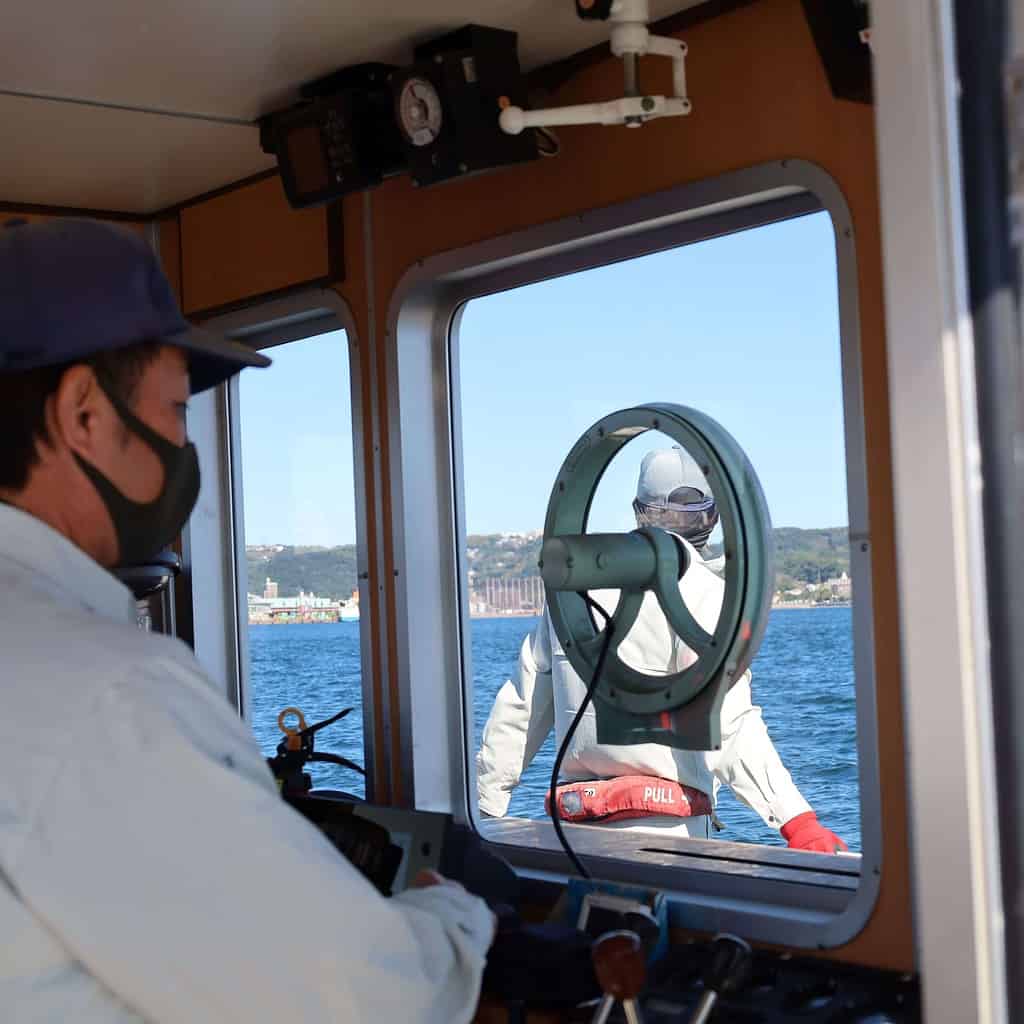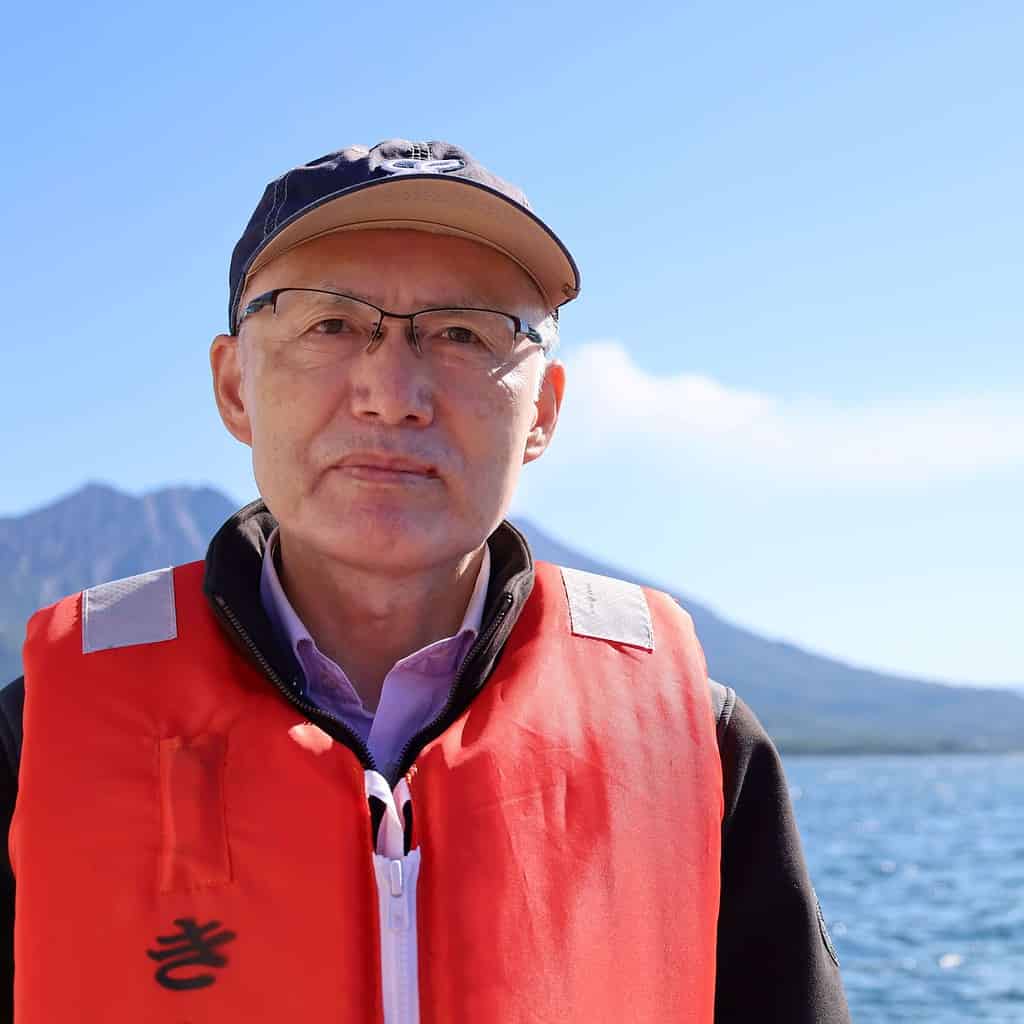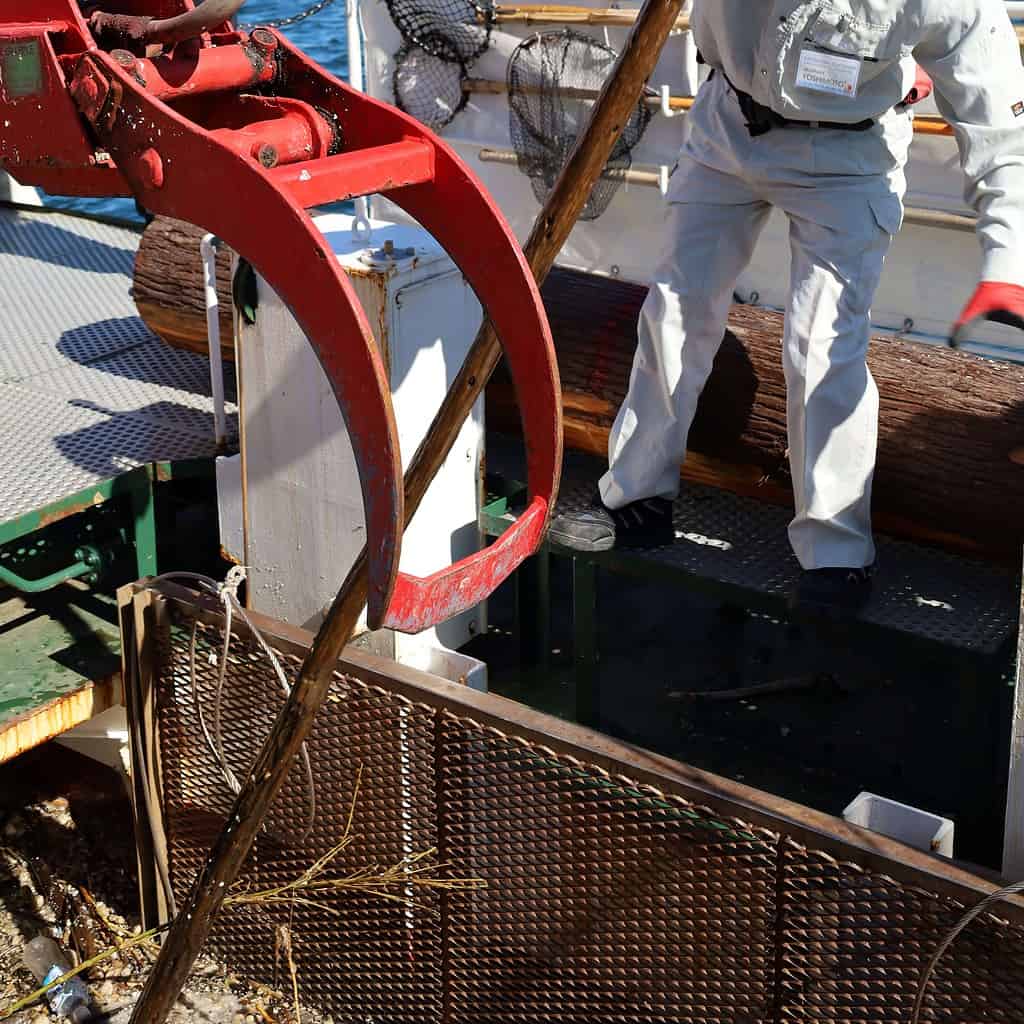Aboard the Kinko
In Kagoshima, Japan, an organisation is taking a proactive approach to floating ocean pollution, ‘sweeping’ the local port five days a week. The Kagoshima Seikoukai Marine Group is a membership organisation that operates a catamaran, the Kinko, which collect debris— from large logs to polystyrene and everything in between—to ensure shipping lanes are safe to navigate at the busy port.
The captain of the Kinko runs a tight ship. After he steers to a patch of rubbish, two deckhands wield bamboo nets, directing the collection of organic matter (bamboo fragments, driftwood, dried grass and leaves, which admittedly to our eyes look harmless), as well as plastic bags and bottles, face masks, food packets and other items. A rotating roller between the Kinko’s two bows pulls the garbage into a metal basket that is lowered into the water. When collection is complete, the basket is lifted out of the water with the rubbish contained.
Back on land, combustible rubbish is incinerated, cardboard and polystyrene are sent for recycling, and the remaining rubbish is taken to landfill.
An active volcano, Sakurajima, looms dramatically over the port, and the pumice it ejects is another hazard to boats, so it is also collected by the Kinko’s crew.
The Kagoshima Seikoukai Marine Group has 89 members drawn from shipping, fishing, logistics and freight companies. It is about to celebrate its 50th anniversary
The Group is also responsible for land-based rubbish collection, and Executive Director and Secretary General, Shoji Nagatoshi, says during COVID, they noticed a dramatic increase in illegally dumped household goods – twice as much was collected than in previous years. He says the Group collects between 115,000-217,000kg of rubbish annually, with up to 77% of that being swept from the ocean surface. About 80% of the garbage is collected during the typhoon season (May-October) when more rubbish is pushed down-river and into the sea.
Port and prefecture authorities support the effort, in cooperation with the private sector. Nagatoshi says Kagoshima’s position and landscape is unique, and they want to protect it for future generations. This port city of 600,000 people has built its identity and culture on the ocean, and organisations such as the Kagoshima Seikoukai Marine Group are ensuring that legacy continues.






